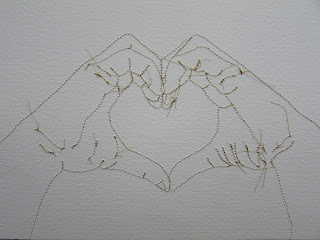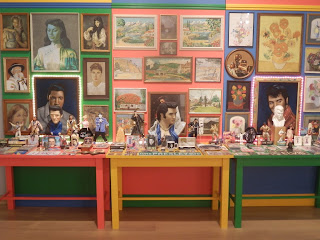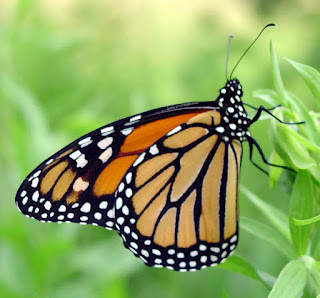These pieces, (Gesture I, and Gesture II), are two new works of mine which will make their debut alongside other pieces at Art For The Heart - the annual Valentine's themed exhibition at Cambridge Contemporary Art which opens tomorrow.
For this new Gestures series, and this show, I was thinking about how we express love, through signs and gestures - particularly those made by the hands, that form the shape of the heart - the universally acknowledged symbol of love, so commonly expressed in selfies and Instagram posts. As with other pieces created last year I used the sewing machine as a drawing tool to represent the hands, and then added the butterfly to represent that lightness of being, and fluttering sensation one experiences with such a powerful emotion as love.
After stitching the positions of the hands into the paper, I then had to decide which butterfly shapes to add to the final pictures. I quite liked the reverse of the pictures with the rough threads which formed a mirror image of the hands.
I had a great reaction to the pieces I exhibited in CCA's Christmas Show, so to reserve these new pieces, or other works of mine in the Art For The Heart show, then contact the team at Cambridge Contemporary Art at the address/number below. If you are unable to make it to Cambridge, but would like to commission a similar piece as a gift for your very own valentine, then contact me by phone or email. Look out for more in the Gestures series as the year progresses.
Art For The Heart
30th January - 14th February
Cambridge Contemporary Art
6 Trinity Street
Cambridge
01223 324222
http://www.cambridgegallery.co.uk/





































